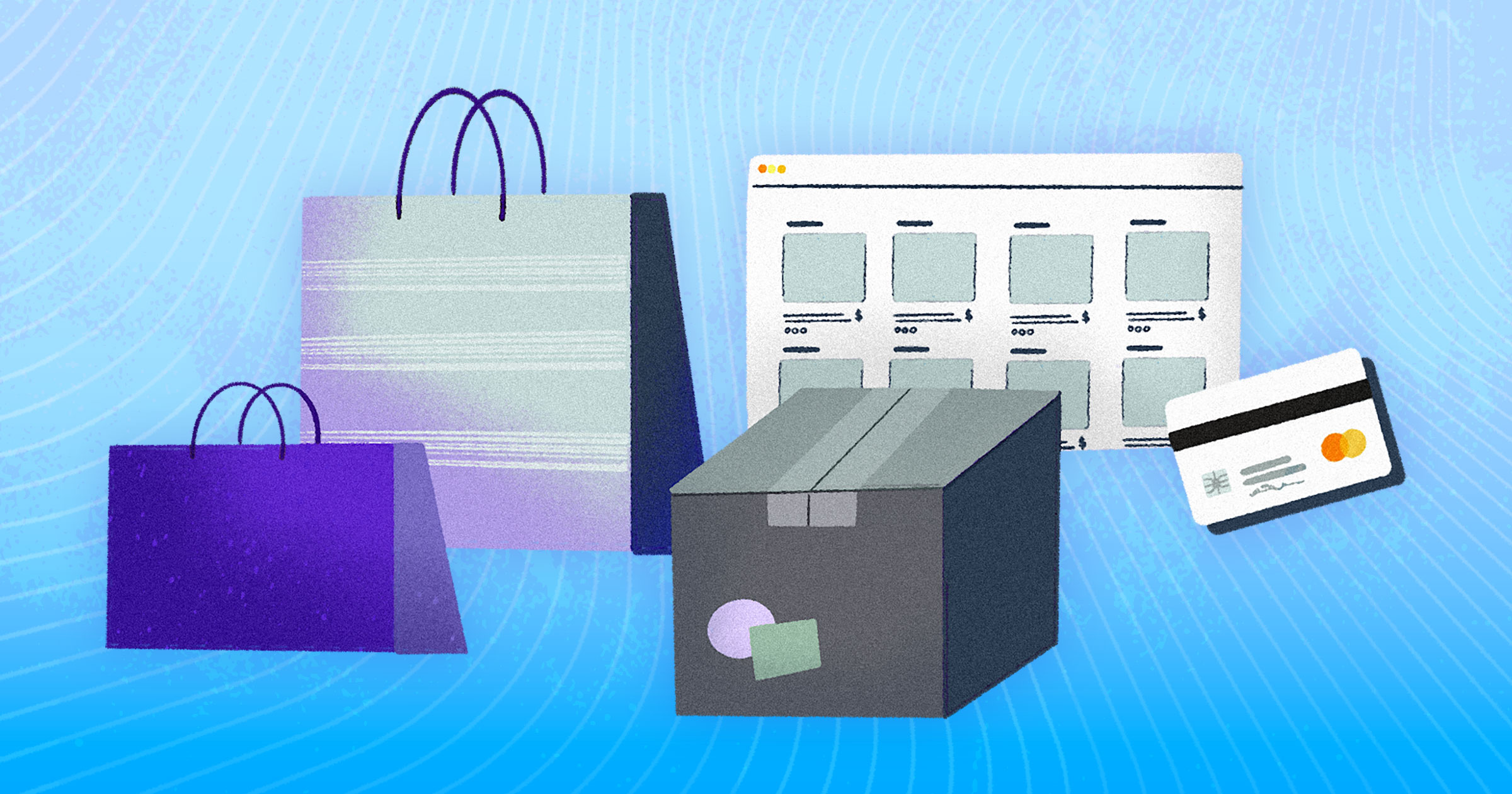Table of Contents
Headless ecommerce has been gaining traction for a while now, and it may be high time for your company to adopt this model, and fully embrace the modern online shopping experience.
The modern consumer expects to have full and total control over their buying experience. Whether through computers, tablets, phones, or even smart home devices, people don’t want to be restrained in the way that they browse and purchase on any ecommerce platform.
With headless ecommerce, you’ll be able to provide the fluidity that your customers want effortlessly and break down the restrictions of traditional, monolithic platforms which are quickly becoming obsolete.
In this guide, we’ll walk you through what headless ecommerce is, the benefits it could offer your business and the things you’ll need to consider when adopting headless ecommerce.
So, what is headless ecommerce?
To put it simply, headless ecommerce is an approach to ecommerce in which the front end apparatus (or head) is separate from the site’s back end functionality. In this model, the front-end elements, such as the user interface, IoT integration, social commerce, etc, can be managed and updated in their own right, without affecting anything in the back end.
Without the limitations of the back end directing their touchpoints, ecommerce companies can enjoy increased freedom to create unique and engaging experiences for their customers, offering features and functionalities that wouldn’t be possible in the usual monolith model. For example, TikTok partnered with Shopify to move the social network one step closer to a seamless ecommerce platform in its own right.
When properly implemented, a headless ecommerce model will mean that you won’t have to build your shopper experience within specific, siloed categories. Instead of web, social, and display content, you’ll simply have content.
In a truly headless business model, you’ll be able to manage features like your shopping cart, promotions, product information, and other tools, no matter what entry point your customers use. Furthermore, a well-oiled headless ecommerce model will be able to connect to any existing front-end customer experience through APIs.
Is headless ecommerce right for you?
Before you made it here, you may have seen a lot of ecommerce thought leaders singing the praises of the headless ecommerce model, citing a clear trend in ecommerce consumer behavior that’s been going on for some time now. Customers are consuming content anywhere and everywhere, and as such they expect brands to be able to provide one consistent experience across all their different platforms.
With its emphasis on omnichannel experiences, it’s true that headless ecommerce lends itself to what customers want to see from their shopping experiences. However, adopting a headless ecommerce model isn’t as easy as flipping a switch, and if your company is fairly young, there are going to be some major obstacles you’ll have to consider:
- No out-the-box front end: Without a dedicated front end, you’ll need to leverage the necessary resources to develop your headless ecommerce front end from scratch.
- Long development timeframes: Within headless ecommerce, the front and back ends need to be developed separately. While this promises an excellent degree of flexibility for customizing your customer experience, it also means that building a headless ecommerce store will require a longer timeframe than you may be used to.
- High maintenance and resource requirements: Building your own headless ecommerce solution will require a relatively large team of either in-house or outsourced developers, which may be hard to acquire, especially if your company is in its early stages. Third-party solutions like Shopify can mitigate the drain on resources, but come with some limitations in terms of design.
Even when your headless model is set up, it will require maintenance of the front end, back end, and APIs separately, which can also represent a serious drain on resources.
What headless ecommerce can offer your business
Though the headless model may not be for everyone, companies who have the right resources and room for upward mobility can enjoy some incredible benefits from it…
Faster changes to your front end: Though making the initial switch to a headless model is a big undertaking, once the fundamentals are in place, you’ll be able to forget that old obstacle of front-end work depending on back-end work, and manipulate your customer-facing touchpoints independently. Ultimately, this means you’ll be able to execute changes and experiments on your front end much faster than before.
Greater control and future-proofing: Traditional ecommerce systems coded in a number of different languages can get in the way of essential integrations that will keep your customer experience competitive. With its powerful APIs, the headless model will allow you to bring your existing systems (IMS, ERP, PIM, etc) into the fold, and construct a customer experience using whatever programming language suits you. This will also give you the flexibility you need to adapt to significant changes in technology, and keep your business developing in-line with the feverish pace of the ecommerce niche.
Many successful business leaders have already seen huge benefits from using headless-friendly ecommerce platforms like Shopify, with separate SaaS tools used for their front-end.
Benjamin Sehl, co-founder of sustainable clothing and homeware company Kotn, said: “Shopify covers 80% of our needs, and I think that’s common across all merchants. It’s that next 20% where headless comes in and where we really spend our time. What we’re trying to do is let Shopify handle the stuff they do so well, and we can focus on what makes us unique. That’s where we’ve really gone with our thinking around being headless.”
Corey Kogan, Senior Developer at MAKDigitalDesign, agrees with the potential for headless ecommerce. “in my opinion, headless is the future, and e-commerce platforms are taking the time right now to lay the groundwork to make it an easier space for merchants to break into”, he explains. Kogan has seen the headless model at work for a variety of clients, like Springbok Puzzles.
Things to consider when integrating headless ecommerce for the first time
As we’ve said before, making the switch to headless ecommerce is no walk in the park, and the way you approach it will have a significant impact on your overall success.
If you’re committed to the idea of trying headless ecommerce for the first time, here are a few best practices to bear in mind…
Carry out thorough cost assessments: Discounting the upfront cost of a headless ecommerce solution, there are going to be a number of additional costs to bear in mind, including themes and reference experiences of your main site, third-party integrations, transaction fees, hosting, and so on. Let any of these fall by the wayside in the planning stages, and it could cause serious budgetary issues further down the line.
Know your front end options: When choosing how you’re going to approach the front end in your headless ecommerce model, you need to understand the functionalities, benefits, and drawbacks of the three main options: custom build, front-end-as-a-service, and digital experience platform. Factors like the size of your store and your in-house resources will inform which of these options is the best choice for you.
Plan how you’re going to implement your front end: The practicalities of your switch to headless ecommerce will depend on the resources you’re able to mobilize for the purpose. Once you’re clear on the steps ahead of you, determine whether it will be better to use your in-house team, an external agency, or another systems integrator. Making this decision early in the planning phase will make the whole process significantly faster and smoother.
The security and data implications of headless
Though the headless ecommerce customer experience can be significantly simpler than traditional models, the architecture needed to make it happen is comparably complex. This brings with it new security and trust issues that need to be addressed.
For example, shopper and API authentication within single-page and mobile apps can represent a serious vulnerability within a headless ecommerce model. Your ecommerce store app will likely require a direct call to the API to authenticate user identities.
Less secure workarounds, such as storing customer information on a mobile device, could open your company up to catastrophic data breaches. Using secure shopper login APIs with secure workflows will help you proceed without such vulnerabilities hanging over your head.
When it comes to developing your back end, you’ll need to make sure all systems are compliant with GDPR, PSI, or any other regulations which apply to your industry or region. The decoupled nature of headless ecommerce does make it more resilient against common cyber threats. However, you’ll still need to take all necessary steps to enforce user choice and consent in your back end and make sure that wherever you store your sensitive data, your methods are 100% compliant with the relevant privacy laws.
It’s also essential to back up all SaaS data that makes the front-end elements of your headless ecommerce platform tick. SaaS retention policies, programmatic errors when integrating several SaaS apps, cyberattacks, and even plain old human error, can compromise your ecommerce store data with devastating consequences.
By devoting resources to training and knowledge transfer to ensure relevant team members develop good data-handling habits, automate backups wherever possible, and implement airtight data policies, you’ll be able to enjoy a reliable safety net to prevent the worse consequences of data loss and security breaches.
Final thoughts
Though the headless ecommerce model may not be for everyone, the rewards that can come out of integrating it into your business can be huge.
By understanding where it fits into your existing business model, planning your resources effectively, and making sure all bases are covered from a security perspective, you can ensure that your move towards a headless ecommerce model will be as smooth as possible.
If you’d like more support keeping your SaaS data secure as you move towards a headless model, be sure to check out Rewind’s great suite of integrations and see what we can do for you.




